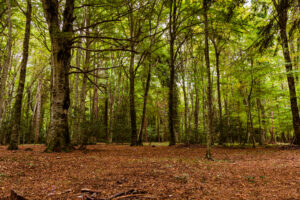The process of planting trees in Ireland is a topic of great interest to many people. The country has a project aiming to plant over 440 million plant species by the year 2040. This plan encourages all companies and citizens in Ireland to participate and plant trees in Ireland, with a target of planting 22 million new trees per year.
However, one of the main questions that arise is whether planning permission is required for such activities.
If you are one of those interested in understanding more about this topic, don’t worry. We have prepared a comprehensive guide to help you understand how the process works and the benefits it can bring to Ireland.
What is Afforestation and What Are Its Types?
Afforestation is a practice aimed at increasing tree planting in an area that has not had any plant life for a long time (at least 50 years). These lands are often left fallow due to soil depletion or increased overgrazing. Afforestation can benefit the land, especially in dry and deserted areas, idle agricultural lands, degraded pastures, and disused industrial zones.
Types of Afforestation
Currently, there are three types of afforestation, all of which require good planning to be executed. They are:
1. Natural Regeneration
This process involves only native species, created in natural forests, which are the best options for carbon sinks. They also build habitats. The more types of trees involved, the more these spaces can develop into multifaceted habitats, allowing numerous species of animals and ecosystem service providers to thrive.
2. Agroforestry
Agroforestry involves planting fruit-bearing trees capable of producing a large number of foods. These trees are usually used to increase carbon capacity on existing agricultural lands, providing sustenance for local people or serving as an economic resource for companies selling their fruits.
3. Commercial Plantations
The primary aim here is the economic gains that the action could bring to a company. Although these trees can serve as carbon sinks, the planter often fells them. Thus, while a form of afforestation, this option does not bring long-term environmental benefits.

Main Benefits of Afforestation
As mentioned earlier, Ireland has a project initiated in 2019 to increase the number of trees in the country. The primary reason is the numerous benefits these plants offer the environment. Some of them include:
1. Avoids Carbon Sequestration
Carbon sequestration is a process where the planet’s atmosphere stores carbon in its woody tissues, causing climate change. Planting a tree absorbs this carbon through photosynthesis, providing a solution to the effects of global warming.
2. Conserves Biodiversity
Afforestation has a significant impact on biological conservation, especially when native trees are planted. They create new forest habitats for numerous animal and plant species to develop healthily.
3. Improves Air and Water Quality
Forests act as natural filters. By planting trees, we contribute to the growth of these ecosystems, capturing sediments and absorbing harmful pollutants, improving the quality of the air we breathe and the water we use, thus preventing polluted rivers. Afforestation also helps purify the air, removing gases and releasing oxygen through photosynthesis.
4. Conserves Rainwater
Trees conserve rainwater, which often runs off and is not utilised. Dense vegetation allows water to infiltrate the soil, recharging groundwater that feeds lakes, rivers, and mangroves, and restoring subsurface aquifers.
Afforestation Licence
Although most forestry operations do not require any licences, certain activities need authorisation to proceed, and afforestation is one of them. Those undertaking this process without the appropriate licence may be committing an offence and could be held accountable.
When is an Afforestation Licence Required?
You need to obtain authorisation from the Department of Agriculture, Food, and the Marine if you plan to plant trees on an area exceeding 0.10 hectares. In cases where the planting area is smaller than 0.10 hectares, no licence is necessary.
Importance of the Afforestation Licence
While afforestation brings many benefits to the country, the licence is a way to control activities that might impact the soil. The primary reason for requiring permission to plant trees is to protect forests and ensure all forestry activities are conducted according to Ireland’s management principles.
Unfortunately, the number of licences issued has decreased recently, resulting in fewer trees being planted, which needs to change. Many environmental services can now be requested online, making them more accessible.
So, if you want to help transform the world by bringing more life to our planet, join the Irish movement and do your part in tree planting!


